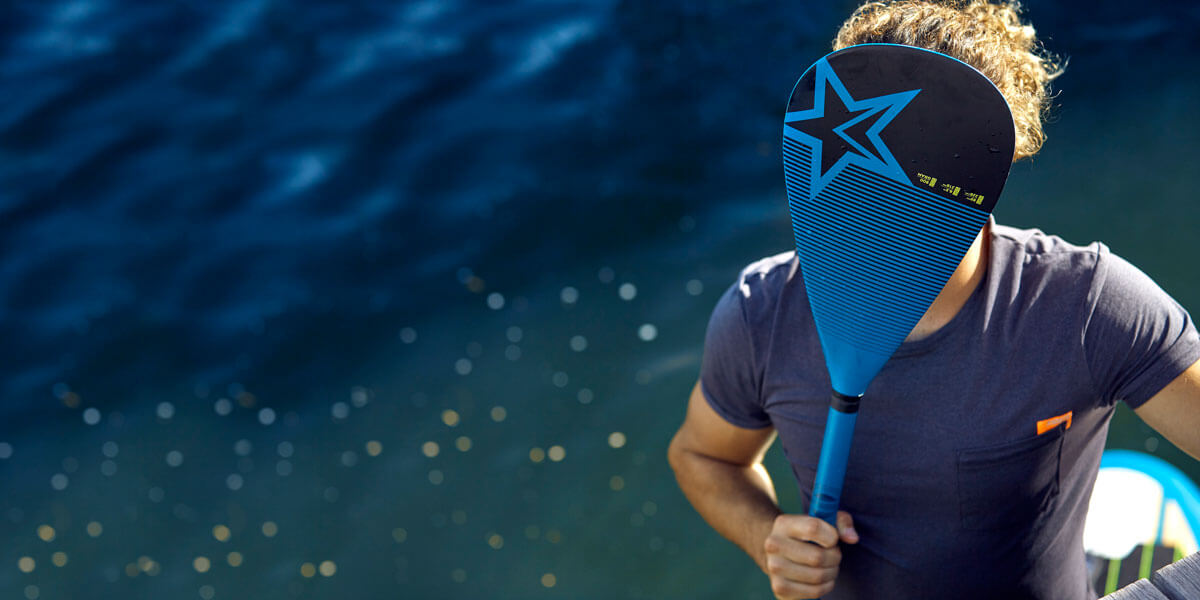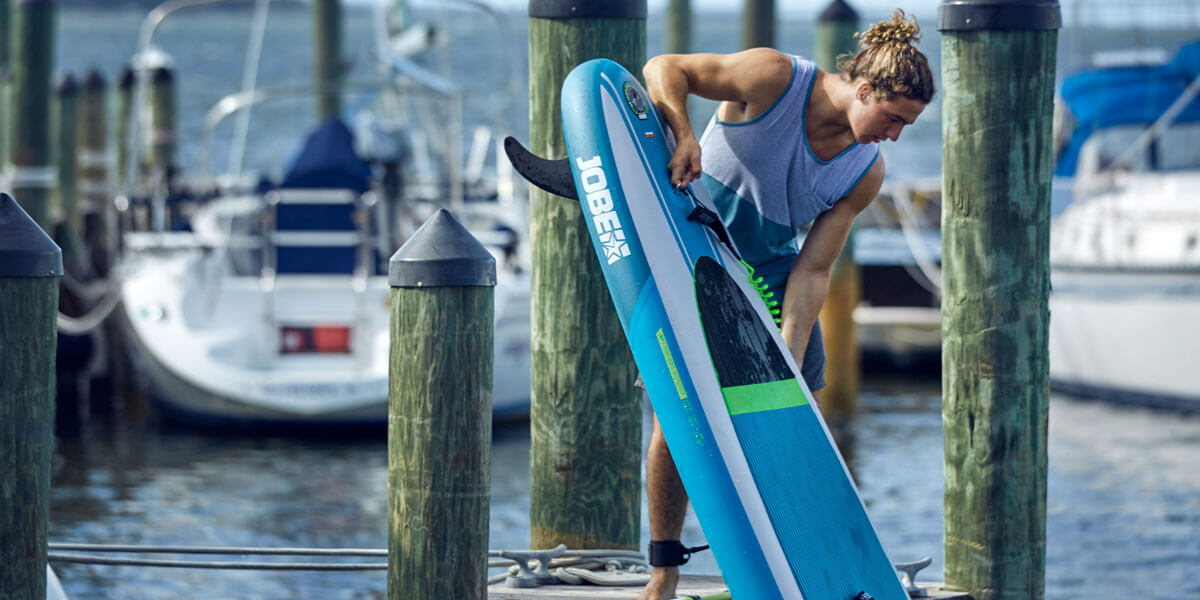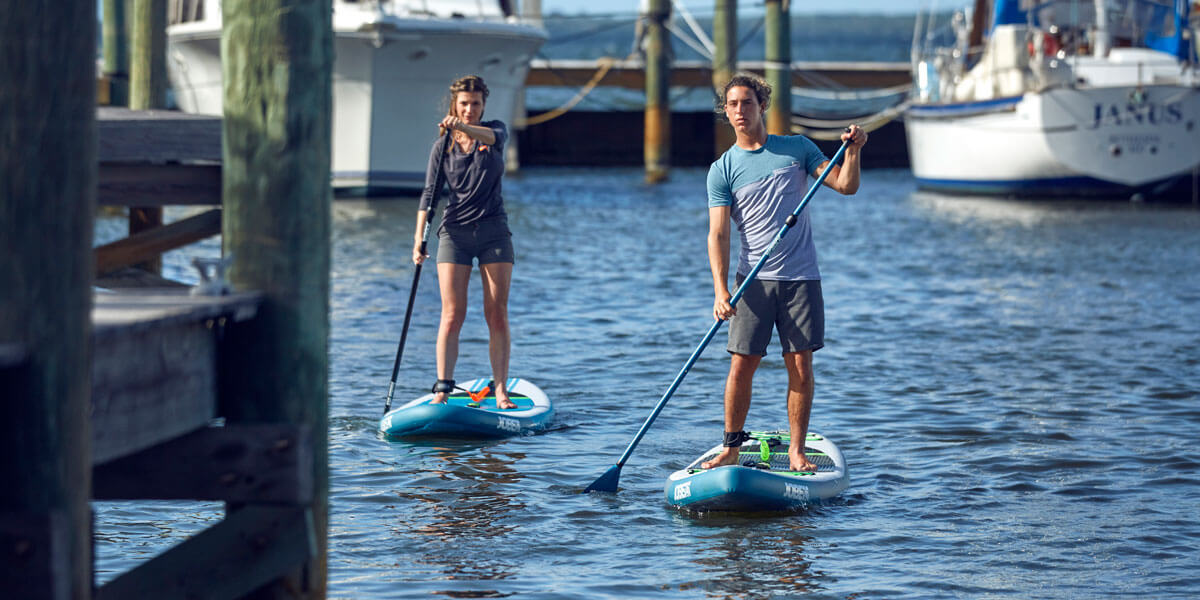
Picture this; you wake up in the morning and the first thing you do is looking out the window. The first thing you see is a clear blue sky. It’s 30 degrees outside and you are free today! You’ll need a bit of cooling down and there is no better place to cool down than in and on the water. You have always wanted to try supping but never got the chance to do it. Maybe you didn’t have the time or maybe you had different reasons, but now is your chance! It is the beginning of the watersport season. In this article you will find everything that you need to know, when you go paddle boarding for the first time.
What is SUP paddle boarding?
Firstly, if it is your first time around, a little background information concerning paddleboarding might come in handy. Stand up paddle boarding, also known as SUP, has been around in it’s most current form for over a decade. SUP is taking the water sports world by storm and has long been considered as the fastest growing water sport of the 1990’s and 2000’s. SUP uses a surf style board and a long paddle.
Types of boards
There are different paddle boards each available in different sizes, styles and prices with specific boards designed for different surroundings. Boards designed for flatwater recreation, river, lake and ocean racing, fishing, long distance touring, yoga and also for sup surfing. The board is controlled by the paddler only.
Benefits of SUPing
Stand up paddling will offer you an incredible outdoor cardio work-out which will also help you to relieve stress. Several benefits of supping are that you can do it everywhere on the water and at any time. Nearly every body of water-, worldwide, has become a playground for standup SUPpers. The most often mentioned health benefit of this sport is the improvement of the core (you’ll get abs of steel!). Paddle boarding is very easy to learn and therefore an excellent choice for improving your overall fitness, regardless of what shape you’re in now. SUP is a safe activity for people of all ages, sizes, fitness level and athletic ability.
How to choose a stand up paddle board
Right now you have picked a great time to start, because the selection of sup boards has never been better. There are four basic types of stand up paddle boards: All-round, Touring, Yoga and Wave. These types can also be divided in inflatable, titan and bamboo boards. However, when it’s your first time around and you don’t know if it is something for you, finances come into play. In this chapter you will find the different types of SUP boards and their benefits.
Materials
The SUP’s are built from different materials, those materials are: inflatable, bamboo and titan.
Inflatable
The inflatable paddle boards offer a complete portable package at a price anyone can afford. Furthermore, when they are deflated, they also pack down into size and fit into something that is comparable to a sleeping bag in just several minutes. If you seek value, portability and durability, the inflatable boards are the way to go. Especially if you are a beginner and seeking an economical first-time and complete package.

Bamboo
The Bamboo SUP’s are ideal if you live close by the water. A shiny bamboo veneer layer gives the board its nature-inspired look matching all the peaceful spots you’ll face. Channels are also incorporated in the Bamboo- paddle boards. These channels maximize traction on the water and improve speed and maneuverability.
Titan
The titan is resistant against heavy impact and it is one of the strongest and most durable boards. This paddle board is stronger than her competition.
Then you have specific paddle boards designed for different purposes, which will be explained next:
All Round
The all-round paddle board models are perfect for beginners but also for intermediate paddlers. They will offer you maximum versatility in all sorts of conditions.
Touring
Maximum speed on flat water and open ocean conditions, that is what the Touring SUPs will give you. If you are a paddler looking for more speed and efficiency, the touring models are a magnificent choice. These boards break through the water and carry more speed over longer distances.
Wave
The Wave SUPS are designed with a dual purpose, they are designed for flatwater and for surfing. If you are looking for a paddle board to cruise the flatwater or/and surf, these boards will offer you maximum maneuverability.
We understand that the internet is full of options and choices, it can get very confusing. However, we may be your lifesaver! We will gladly help you to choose the best board for you plan and budget. Our passion for helping you with choosing the right gear will allow you to make an excellent choice.
You will find our complete Board SUP-collection here
How to choose your paddle
Next to the board, the paddle is the second most expensive item you will need when you go supping. Boards have gone through an evolution, but so have the paddles. However, the general rule is that the paddle needs to be between anywhere to 10 cm and 18 cm (4 to 7 inches) taller than you. When you place your wrist on the paddle holder, with your arm straight, you’ll have the ideal length.

Carbon
The most expensive paddles are the lightest ones because they are made of carbon. Lighter paddles are made from expensive materials. However, they are worth the investment because they reduce how quickly your hand fatigues compared to heavier paddles
Fibre Glass
The name is pretty self-explanatory, the paddle is constructed of Fiber glass. The paddle won’t bend easily, the fiber glass blade of the paddle will give your movements in the water maximum flexibility with a minimal amount of effort.
Freedom Stick
The freedom stick is a very durable option. The paddle has a fiber glass shaft and has a plastic blade. The Freedom Stick won’t break easily and can take a hit.
Aluminium
An Aluminium Paddle is perfect for the all-round and entry-level rider with 100% aluminium, a weight of 1000 grams and a reinforced nylon blade. A smart streamlined blade gives the user power and control over its board. The aluminum paddle is also the cheapest option. You will find all the paddles here.
Now you have assembled your board and paddle, you are ready to go to the water!
Transporting your SUP
Once you have chosen your board, it is time to go to the water and SUP! First things first, it can get a bit tricky to try and transport your board to the water (does not apply to the inflatable boards, you can blow them up when you arrive at the water and transport them in the easy-to-carry backpack. Did you know that we have an electrical pump to ease the process?). Most of the boards are not small enough to fit in your car. Unless you are the lucky one and the water is close by, there are several things you’ll need to get your board on the top of your car. You will need webbing straps, pads and racks. Getting your board on the top of your car may seem challenging but if you have these items you will succeed. If not, there are many Youtube tutorial videos that will guide you in securing your board to your car like the pro you are.

Carrying your SUP to the water
When you have arrived at your destination you will have to carry your board to the water obviously.
The inflatable SUP’s have a handle which you can carry your SUP with. The Bamboo SUP’s have a hole in them and will fit your hand, which enables you to carry the SUP as well. You could also where them on your shoulder with a bag-strap.

How to stand up on Paddleboard on your first time out
Standing up on a paddleboard when you are a beginner and it is your first time, can be tricky and difficult. Therefore, seek out a body of water with no current, waves and wind. This may sound logical but it will help you to stand up much quicker! When you have sought out that body of water, also pay close attention to the depth of the water. The water must be deep enough that you won’t hit the bottom when you fall down. SUPping is one of the easiest sports and you will learn to SUP in approximately in 15 mins. You will not fall that easily and if you do it won’t be that big of a deal (The SUP-clothing collection is constructed of quick dry fabrics).
How to begin:
1. Walk out to the water and go as deep as your knees
2. Place your paddle across your board, facing towards the nose
3. Facing towards the nose, place both of your knees on each side of the board, SLOWLY.
4. Keep your knees spread comfortably, about 30 cm is good. If you don’t feel like you’re balanced you can adjust your knees. Imagine yourself in a pony ride position, as if you are giving a child a pony ride
5. Place each of your hands on the shaft of your paddle, your hands should be in front of your knees
6. While holding your paddle, use your fingertips to press the deck while you bring one foot up on the place where your knee was
7. Repeat for the other side and slowly stand up from a squat. Don’t forget to also bring your paddle up with you while you are standing up
8. Once you feel comfortable and balanced, you can begin to straighten your back completely.
9. Place the paddle in the water, with the bent part facing forward. You’ll feel more stable once your paddle is in the water. The paddle will provide you with more stability.
Yaaay, you are a pro now!

Now all there is left to do, is not fall off of your board and move around. Keep your eyes on the horizon and not on your feet as it will cause imbalance. Your feet should be shoulder width apart and your knees are slightly bent. Now start paddling, speed will increase stability!
Now you know everything that you need to know when you are a beginner and go SUPping for the first time. If you need some extra paddle boarding tips, not sure which board to get, or need some advice on what gear to purchase, we are happy to help you.



